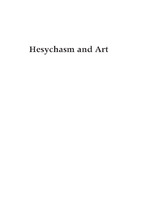Hesychasm and Art
The Appearance of New Iconographic Trends in Byzantine and Slavic Lands in the 14th and 15th Centuries
Abstract
“Although many of the iconographic traditions in Byzantine art formed in the early centuries of Christianity, they were not petrified within a time warp. Subtle changes and refinements in Byzantine theology did find reflection in changes to the iconographic and stylistic conventions of Byzantine art. This is a brilliant and innovative book in which Dr Anita Strezova argues that a religious movement called Hesychasm, especially as espoused by the great Athonite monk St Gregory Palamas, had a profound impact on the iconography and style of Byzantine art, including that of the Slav diaspora, of the late Byzantine period. While many have been attracted to speculate on such a connection, none until now has embarked on proving such a nexus. The main stumbling blocks have included the need for a comprehensive knowledge of Byzantine theology; a training in art history, especially iconological, semiotic and formalist methodologies; extensive fieldwork in Macedonia, Bulgaria, Serbia, Greece, Turkey and Russia, and a working knowledge of Greek, Old Church Slavonic, Macedonian, Russian, Serbian, Latin as well as several modern European languages, French, German, Russian and Italian. These are some of the skills which Dr Strezova has brought to her topic.”
Professor Sasha Grishin AM, FAHA
Adjunct Professor of Art History
School of Literature, Languages and Linguistics
The Australian National University
Keywords
theology; hesychasm; byzantine art; christianity; Andrei Rublev; God; God in Christianity; Iconography; Jesus; Transfiguration of Jesus; TrinityDOI
10.26530/OAPEN_502556Publisher
ANU PressPublisher website
https://press.anu.edu.au/Publication date and place
2014Classification
History of art
Medieval style


 Download
Download Web Shop
Web Shop